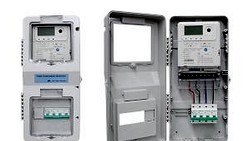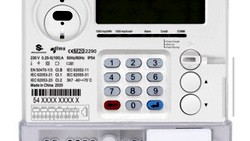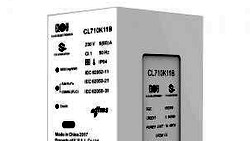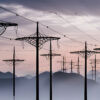As the world grapples with the effects of climate change, sustainable living has emerged as a critical concern. One area of focus is renewable energy generation, with an increasing number of individuals seeking out innovative ways to reduce their electricity cost. One such solution gaining popularity is the concept of balcony power plants. These miniature ecosystems not only allow people to generate their own electricity, but also provide an opportunity to connect to the larger electricity grid.
As the popularity of balcony power plants grows steadily in Europe, this article aims to offer practical insights, specifically focusing on the crucial aspect of metering.
What is a Balcony Power Plant?
A balcony power plant is a compact, self-contained electricity generation system designed to be installed on a balcony or terrace. It represents a small-scale version of conventional solar panel systems and utilizes the same principles of harnessing solar energy. However, balcony power plants are tailored for urban environments where space is limited, making them an ideal choice for flats, condominiums, or even small houses.
Typically, a balcony power plant consists of solar panels, an inverter, eventually storage batteries, and a smart metering system. The solar panels capture sunlight and convert it into electricity, which is then directed to the inverter. The inverter transforms the generated DC power into AC power, suitable for household use. Excess energy can be stored in batteries for usage during low sunlight periods.
Integration with Metering System
A crucial aspect of balcony power plants is their integration with the electricity grid through a process known as metering. Metering allows individuals to both consume electricity from the grid and sell excess energy generated by their balcony power plants back to the utility company.
Two main varieties of metering systems are commonly used:
- Net Metering
This system allows individuals to offset their electricity consumption by feeding surplus energy into the grid. When the balcony power plant produces more electricity than needed, the excess is sent back to the grid. The energy exported to the grid is then credited to the individual's electricity bill. - Feed-in Tariffs (FiTs)
In some regions, instead of net metering, feed-in tariffs are offered. With FiTs, individuals are paid a predetermined rate for every unit of electricity generated by their balcony power plant and fed into the grid. This system incentivizes renewable energy production and allows individuals to earn financial benefits.
Both scenarios require the end-user to possess a bidirectional energy meter, and a recent ruling by German authorities permits these meters to spin backwards in case of overproduction for up to four months to facilitate the replacement of old electromechanical meters with electronic bidirectional ones (current as of 27.06.2023). Due to Germany's delayed implementation of the compulsory European smart meter rollout, a large portion of domestic energy meters still consist of electromechanical (Ferraris) types.
Symbols on the meter
The symbols are defined in IEC 62052-11:2020, table D. Specific National regulations can override these meter symbol recommendations.
- Reverse spin protection
Worldwide, most electromechanical meters have reversal protection for tampering reasons. So, if the meter shows this symbol , it won't spin reverse. It stops after maximum one rotation backwards, once the black or red disc-mark is in front.
, it won't spin reverse. It stops after maximum one rotation backwards, once the black or red disc-mark is in front.
The utility get the exported energy without recording and any commercial benefits for the end-user.
If this symbol is missing on the electromechanical meter, there is a good chance that the meter will run reverse. You can also find meters in the field, where the manufacturer hasn't indicated the symbol, since it's a recommendation. - Bidirectional meter
This symbol should be shown on electronic energy meters for bidirectional use. It indicates, that registers for energy import and export are available, and the e.g. net-metering tariff can be applied by the utility.
should be shown on electronic energy meters for bidirectional use. It indicates, that registers for energy import and export are available, and the e.g. net-metering tariff can be applied by the utility. - Bidirectional meter with always positive register
Meters with this symbol are the worst for using photovoltaic. These meter always counts the energy as import energy, irrespective of the real energy direction. This leads to the effect, that the end-user pays additionally for his exported energy.
are the worst for using photovoltaic. These meter always counts the energy as import energy, irrespective of the real energy direction. This leads to the effect, that the end-user pays additionally for his exported energy.

(symbol Image, Credit CLOU)
While the benefits of balcony power plants are undeniable, a few challenges remain
- Initial Investment
Setting up a balcony power plant requires an upfront investment for the solar panels, inverter, batteries, and metering system. Although the costs have reduced in recent years, they can still be a barrier for some individuals. - Limited Capacity
Due to space constraints, balcony power plants have a lower capacity compared to conventional solar installations. Consequently, the energy output may not be sufficient to meet all of an individual's electricity needs. - Regulatory Support
Widespread adoption of balcony power plants depends heavily on supportive policies and regulations that encourage net metering or FiTs. Policymakers should create an enabling environment to facilitate their deployment.
The actual maximum power for balcony power plants and mini PV in Europe is fixed on 800 W. - Grid Stability
The influence of balcony power plant installations in bulk on power grid stability will largely depend on several factors, including the size and capacity of the power plants, the local distribution infrastructure, and the overall grid management strategies in place. While the increased adoption of balcony power plants can introduce decentralized energy generation and potentially reduce strain on the grid, it can also pose challenges related to intermittency and voltage regulation if not properly managed. Implementing advanced grid management technologies and ensuring proper integration and coordination of these decentralized power sources will be crucial in maintaining grid stability during large-scale balcony power plant installations.
Takeaway
Balcony power plants represent a significant step towards decentralized renewable energy generation. As technology advances, it is expected that the efficiency and capacity of these systems will improve, making them even more attractive for urban dwellers. With supportive regulations, increased affordability, and public awareness, balcony power plants have the potential to make a significant contribution to the global transition towards a sustainable and greener future.
Feel free to reach out to us if you have any inquiries regarding bidirectional metering or grid stabilization with electrical energy storage. Our team of experts is available to provide you with detailed explanations and discuss how we can assist your utility or power company in this regard.
Editor's note: This article was originally published in June 2023 and has been updated for comprehensiveness.





All comments are moderated before being published. Inappropriate or off-topic comments may not be approved.